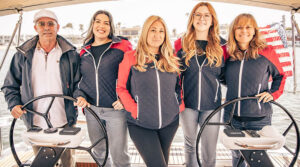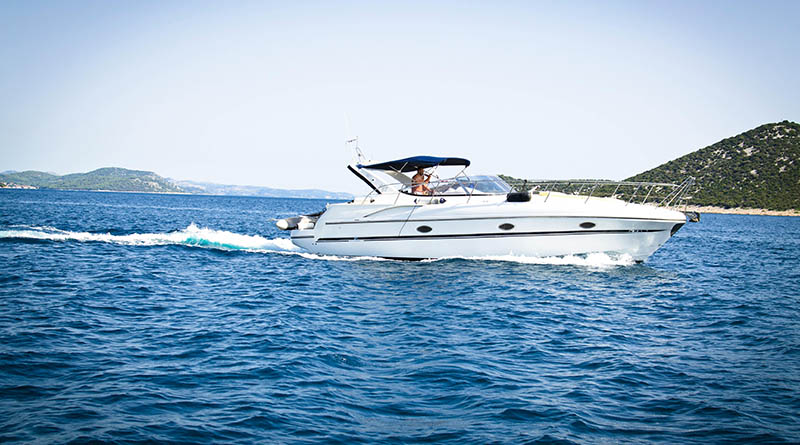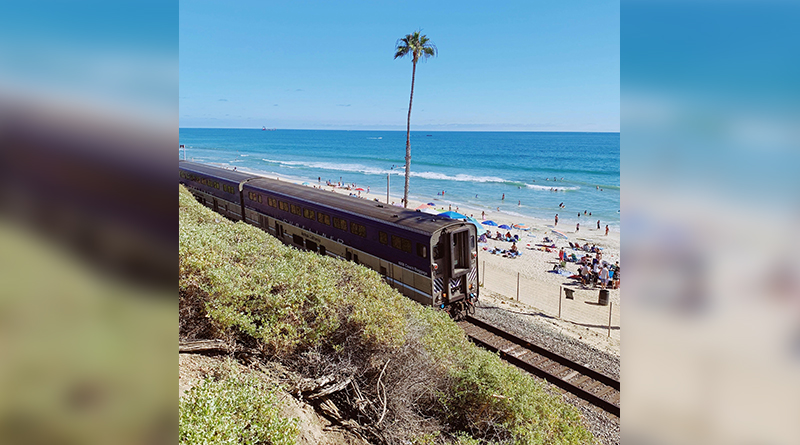Every summer, thousands of Southern California boaters untie their dock lines and head for open water — chasing tuna, exploring Catalina, or simply cruising the coast. But there’s one detail many overlook before firing up the engines: understanding if their boat is truly protected should something go wrong. Contrary to popular belief, a standard homeowner’s insurance policy doesn’t fully cover vessels, especially when it comes to fishing gear, on-water accidents, or damage sustained far from the dock.

Boat insurance is a specialized product, and for anglers, cruisers, and sportfishing operators alike, understanding the details can save headaches — and money — down the line. The most fundamental choice starts with how a policy values your boat. Agreed Value policies lock in the vessel’s worth at the time of purchase, so if there’s a total loss, owners receive that full amount with no depreciation deducted. Actual Cash Value policies, by contrast, factor in depreciation, which means payouts can fall significantly short of the boat’s original value. For those with older boats, it’s an important distinction that directly affects the bottom line.
Beyond how the boat itself is valued, policyholders must weigh coverage options. Liability insurance protects against damage or injury caused to others, while collision coverage handles repairs to your own vessel. Comprehensive policies go further, covering events like theft, fire, or vandalism. Medical payments can assist with expenses if someone is hurt on board, while towing and assistance coverage is particularly relevant for boaters operating offshore or in remote areas where breakdowns can be costly — and complicated.
According to Riley G. Shoen, a Marine Broker with Pacific Ocean Marine Insurance, one of the most common coverage gaps he sees involves navigation limits — particularly for boaters venturing into Mexican waters.
“We see many boaters whose insurance policies only cover them in West Coast U.S. waters, not realizing that their coverage drops as soon as they cross the border,” said Shoen. “We recommend that you always check the Navigation Limits listed within your policy before long trips or trips near the border of Mexico.”
A simple oversight like this could leave an otherwise well-insured vessel completely exposed during an emergency just a few miles offshore.
For Southern California’s fishing community, another overlooked aspect is coverage for gear. “A lot of folks assume their fishing equipment is covered, but unless it’s itemized or specifically added to the policy, they’re out of luck if it’s stolen or damaged,” explained a local marine insurance agent. Shoen confirmed this trend, noting it’s increasingly common for boaters to request additional coverage for high-end rods, reels, and electronic equipment.
“When first establishing the policy, the insurance company will ask what items — whether fishing-related or personal — you’d like covered. If particular items exceed the blanket personal effects coverage, we create a schedule of personal effects and their values to ensure they’re protected,” he explained.
Sportfishing charter operators face even greater stakes. Commercial use riders are a must for those carrying paying passengers or operating guided trips. Without them, standard policies may not cover liability or accidents tied to business activities. Shoen said the rise in bluefin tuna fishing off the coast has brought a surge in small charter operations, but not all of them are compliant.
“There have been a lot of unlicensed, uninsured operations springing up. Anyone looking to go on and enjoy a charter should make sure the vessel is fully insured with a charter endorsement specific to the number of passengers and navigational limits of the vessel — with a USCG-licensed captain,” he said.
New boat owners should also take heed when shopping for their first policy. Shoen stressed the importance of verifying the boat’s condition with a proper survey. “The biggest piece of advice I would give first-time boat owners is to ensure the previous owner has had a Hauled-Out Condition & Valuation Inspection and Report conducted on the vessel within the last year,” he said. While in-water surveys have their place, Shoen emphasized that a full out-of-water inspection plays a pivotal role in an underwriter’s evaluation of value, seaworthiness, and coverage eligibility.
Rates vary based on the vessel’s size, type, value, and storage location. A powerful offshore center console will naturally carry higher premiums than a small skiff. Boats stored in secure marinas or dry stacks typically qualify for lower rates, while those kept on moorings in high-traffic or exposed areas may cost more to insure. Experience also plays a role. Shoen said underwriters often reward boaters who complete safety training and demonstrate responsible operation habits.
“While our office doesn’t offer a direct discount, underwriters reviewing applications will give better premium rates to boaters with more experience, formal class trainings, and prudent safety measures,” said Shoen.
And for anglers who occasionally participate in tournaments or take friends out on informal charter-style trips, Shoen had a strong warning: don’t assume you’re covered. “Many insurance companies do not allow any charter operations on a vessel without the proper coverage,” he said. “There are different types of charter vessel policies that can be issued depending on the nature of your operation. Even one paid trip could invalidate your policy if it’s not covered.”
Before purchasing a policy, boaters should ask a few key questions: Does the policy include salvage coverage in the event of a sinking? Are theft and storm damage deductibles different? Will liability extend to borrowed boats or rented equipment? And does the policy account for tournament use or out-of-country navigation?
Fortunately, there are ways to trim insurance costs without sacrificing coverage. Many providers offer discounts for bundling with auto or home insurance. Installing GPS tracking or anti-theft devices can also help. Some owners opt for seasonal layup policies when their boat is stored for extended periods. And Shoen reminded boaters to do one more thing before they finalize any policy: check with the marina. “Always check with your Marina Operator or Dock Master to make sure your insurance coverage limits meet their requirements,” he said.
Pacific Ocean Marine Insurance has remained a steadfast presence along the Pacific Coast for more than 30 years, originally serving commercial tuna fleets and now offering comprehensive coverage for marinas, recreational boaters, and sportfishing vessels.
“Here at Pacific Ocean Marine Insurance Brokers, we provide a service unparalleled in the Ocean Marine Insurance Industry,” said Shoen. “Our staff is available 24 hours a day, seven days a week. In the event of an accident, we’re focused on getting our clients back on the water as soon as possible.”
That commitment to around-the-clock service, paired with a deep understanding of the local maritime industry, has made the firm a go-to for serious boaters and operators. More info is available at pacificoceanmarine.com.
Several trusted names in marine insurance have earned reputations by tailoring their policies to the realities of life on the water. Blue Water Marine Insurance Brokers in Newport Beach is also among those trusted names. In an interview with The Log, John Olyer, the owner of Blue Water Marine Insurance Brokers provided a deep dive into the nuances of marine insurance that many recreational boaters and anglers in Southern California overlook.
When asked about the most common coverage gaps he encounters, Olyer pointed to two critical areas: hull coverage valuation and liability protection. “I would suggest that a client look at two aspects of marine insurance coverage. First, if possible, the policy should be an agreed-value for the hull coverage versus an actual cash policy,” he explained. “On a total loss to the hull, an agreed-value coverage will reimburse to the owner the hull’s insured value outlined on the declaration page — no depreciation of value is taken into account. On the other hand, an actual-cash value coverage would reimburse on a total loss what the current value of the boat is at the time of its loss, taking the hull’s depreciation into account. That insured value would be determined by the insurance adjuster.”
Olyer also drew attention to an important distinction in liability protection. “There are two types of liability protection: Protection & Indemnity Liability versus Watercraft Liability. Generally (and simplified), Watercraft Liability protects against third-party claims only while the boat is in use or being put into use; while P&I Liability is a broader form of protection. It protects the owner from any third-party liability claims even if the boat is not in use. It also covers claims made by a hired third party who is cleaning, repairing, or temporarily working on the vessel.”
The growing popularity of offshore fishing, Catalina trips, and small charter operations has brought a shift in insurance needs. According to Olyer, “Charter coverage may be available by endorsements. A policy with occasional charter coverage can be obtained with a limited number of annual charters (ranging from 6 to 12 a year depending on the company) and limited to a specified number of passengers (usually 6-pack or 12-pack). Some policies may require a licensed captain to be on board. Those conditions would be outlined in the endorsement.” He clarified that if a boater wants unlimited charter activity, “the alternative would be to obtain a commercial marine policy. The requirements and cost are much greater than the pleasure-craft occasional charters.”
For first-time boat owners purchasing marine insurance, Olyer’s advice is straightforward: “Analyze the choices listed above. Consider the coverage which will protect your investment to the best level. If the boat is going to be docked, moored, or stored in a non-owned facility, determine what that facility is requiring in the amount of liability. In the past, marinas and/or city moorings were requiring a liability coverage minimum of $300,000. Those levels are now commonly $500,000. There’s not much difference in the premiums between $300,000 and $500,000, but the next level of $1,000,000 would reflect in a much larger premium.”
When it comes to tournament fishing or occasional charters, Olyer emphasized the importance of knowing exactly what your policy excludes. “Each policy will define what type of activity is excluded from coverage. Tournaments and charters (even renting out one’s boat for day-use) are rarely included without special endorsements made to the policy. If any type of loss incurs during an excluded coverage, the claim will most likely be denied.”
He also addressed coverage for electronics and high-end fishing gear, a growing concern for many boaters who’ve made significant investments in outfitting their vessels. “Sophisticated electronics are valued and covered under the hull & machinery coverage of the policy. Electronics are typically not separated in value from the boat’s ‘machinery’, and any loss may carry the same deductible as the hull’s deductible,” Olyer said. “However, some companies may offer a smaller deductible on navigational electronics’ loss. Fishing gear coverage may be included in some companies’ hull coverage; but if fishing gear is a big investment on the boat, it should be identified and given specific value before securing coverage.”
As for discounts tied to safety measures or certifications, Olyer explained that while devices like GPS trackers may not directly reduce premiums, they can improve insurability. “A GPS device may be required by a company depending on the type/value of the vessel and where that vessel will be navigated. Otherwise, having such a device will not necessarily lower the premium, but it may make the vessel more acceptable for an insurance company to insure,” he said. “Boater’s cards generally do not lower premiums, but having that card could make the operator more acceptable for an insurance company to insure. Depending on the size, type, and speed of the vessel, operator experience is of utmost importance to an insurance company.”
For more information or a personalized quote, contact Blue Water Marine Insurance Brokers at 949-673-1212, email [email protected], or write to PO Box 15155, Newport Beach, CA 92659.
For Southern California boaters, Hayden Insurance is another trusted company that offers more than policies—it provides peace of mind. Also based in Newport Beach and specializing in marine insurance for over 35 years, Hayden Insurance understands the unique risks faced by local boaters, anglers, and charter operators. Their hands-on approach also connects clients with surveyors, repair shops, and trusted resources.
“Boaters venturing offshore or operating commercially face complex exposures,” explains Gina Doyle, insurance broker for Hayden Insurance. “That’s why policies now often include extended navigation coverage, endorsements for occasional charters, and more nuanced protections.”
As Southern California’s boating culture evolves, so too has the insurance landscape. Doyle notes that one current challenge is insuring older vessels. “Recently, we’re finding it harder to place boats over 50 years in age,” she says. “There are only a handful of carriers willing to consider quoting those boats, which can limit options for owners of classic vessels.”
In comparison, when advising first-time boat owners, Doyle encourages them to embrace the lifestyle—but to be prepared for some insurance realities. “Buy the boat!” she encourages. “Being an avid boater myself, I can say some of my best days have been on the water. But depending on your boating background and the size of the boat you’re purchasing, you should expect to get some training and be aware that first-year premium rates will likely be higher. Those rates typically taper to a normal level after about three years of safe, claim-free ownership.”
For those who participate in fishing tournaments or offer occasional charters, Doyle emphasizes that additional, specialized coverage is essential. “High-value items like fishing gear and electronics should be scheduled separately to ensure full reimbursement in case of loss or damage,” she advises. Doyle also notes that expensive rods and reels are often better covered under a homeowner’s insurance policy as part of personal property coverage rather than added to a marine policy, which can make premiums more expensive.
For boaters hiring a captain or deckhand, Doyle stresses the importance of ensuring the policy includes Captain & Crew Liability and, if necessary, Jones Act coverage for paid crew members. “There will be an additional premium to add this to any policy,” she says. “Insurers may also require proof of U.S. Coast Guard licensing, safety certifications, and inspection records for charter-related coverage.”
Doyle also highlights that many boat owners can qualify for premium discounts by investing in safety measures. “There are small discounts available for completing boating education courses or installing GPS tracking devices, but these are carrier-specific, so it’s worth discussing with your agent,” she explains.
What sets Hayden Insurance apart, Doyle says, is its exclusive focus on marine insurance and its commitment to personal service tailored to Southern California’s boating community. “That singular focus means clients benefit from marine-specific underwriting and coverage solutions that go far beyond what generalist agencies typically provide,” she says.
By focusing exclusively on boat and yacht insurance, Hayden Insurance provides local boaters with marine-specific expertise and personalized service that general agencies can’t match.
Learn more at haydeninsurance.com/services.
Resources like the California Department of Insurance and the Boater Card program can offer baseline guidance, but there’s no substitute for working with professionals who speak the language of tides, tournaments, and tuna runs. From fishing trips to Catalina Island to weekend cruises down the coast, having the right insurance brings peace of mind — and the freedom to enjoy life on the water. Before your next voyage, review your coverage, ask the tough questions, and work with a provider who knows boats as well as you do. Because once you leave the dock, the last thing you want is uncertainty following you out to sea.





